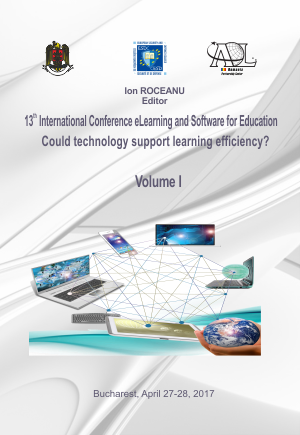MICROWORLD ENVIRONMENT OF SMALL LANGUAGE AS ,,LIVING LABORATORY" FOR DEVELOPING EDUCATIONAL GAMES AND APPLICATIONS
MICROWORLD ENVIRONMENT OF SMALL LANGUAGE AS ,,LIVING LABORATORY" FOR DEVELOPING EDUCATIONAL GAMES AND APPLICATIONS
Author(s): Krisztina CZAKÓOVÁSubject(s): Social Sciences, Education
Published by: Carol I National Defence University Publishing House
Keywords: Applications; Educational games; Design and development; Learning by doing; Microworld environment; Small language.
Summary/Abstract: The character of the 21st century classroom is undergoing a significant change. Today's classrooms call for teachers who can adapt to new conditions and new technologies of the future. Teachers of tomorrow need to be skilled not only in the use of new technical means and technologies, but also be able to provide quality learning by using modern digital technologies in education. Learning paradigm based on constructivism sees not only the pupil’s disposition for learning, but it also highlights the importance of interaction and individual contact with the environment. The paper suggests a practical way of how to integrate new digital technologies into the instructions of different subjects and strengthen the bonds between computer science, informatics-based subjects, and other subjects at primary schools, through developing educational games and applications in the microworld of small languages. Those small "virtual laboratories" allow discoveries through testing and experimentation thereby support the learning by doing, as well as the active learning. Draft concept of the methodology of teaching and preparing future teachers (without programming skills) for developing own educational applications and games in Imagine Logo microworld environment has been studied, verified and exerted in the framework of qualitative research strategy: Design-Based Research. We focused mainly on the design, content and structure of teaching in the first five weeks of semester, when participants should acquire basic knowledge and skills in the use of construction elements of Imagine Logo environment. Into the content of five teaching units are allocated the following elements: motivation, exposition, fixing and diagnostics, which are dealt with during the activities aimed at different phases of teaching. The subject is proposed as an introduction into the study programme (curriculum) of teacher training for primary education.
Journal: Conference proceedings of »eLearning and Software for Education« (eLSE)
- Issue Year: 13/2017
- Issue No: 01
- Page Range: 285-291
- Page Count: 7
- Language: English

